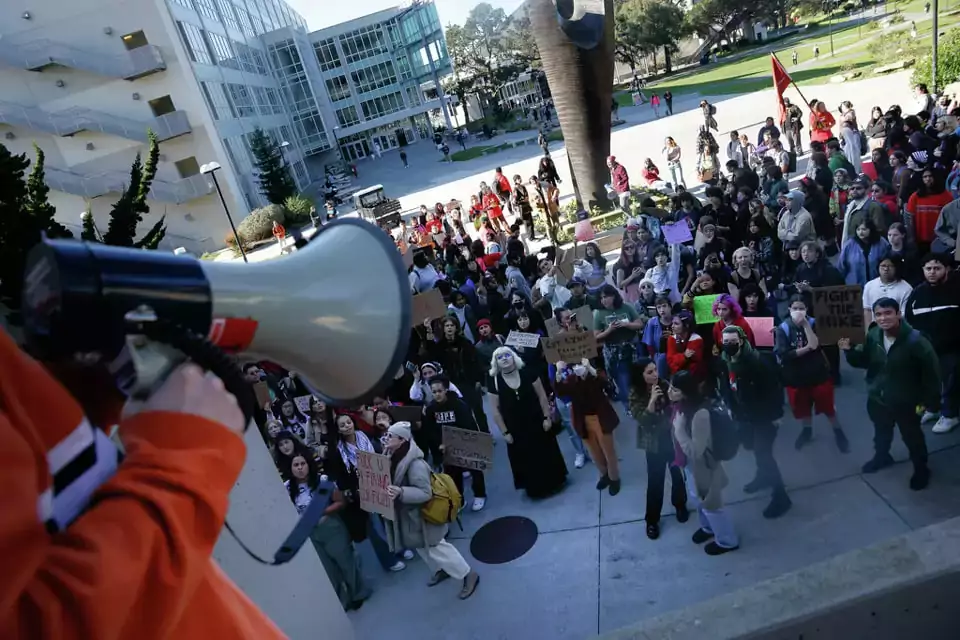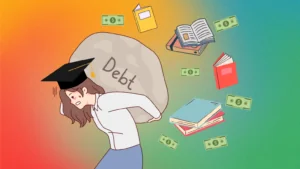San Francisco State University students express their frustration through a walkout, protesting against soaring tuition fees, class cuts, and executive salary increases amidst declining quality of education.

✅ AI Essay Writer ✅ AI Detector ✅ Plagchecker ✅ Paraphraser
✅ Summarizer ✅ Citation Generator
Key Takeaways:
- Students are protesting a 34% tuition hike over five years amid significant course and faculty cuts.
- The increase in executive salaries contrasts sharply with the financial and educational challenges faced by students.
- A sharp decline in enrollment, partly due to the pandemic, is straining the university’s budget.
- SF State’s crisis reflects a broader challenge in higher education to maintain quality while ensuring accessibility.
At San Francisco State University, a wave of student unrest is brewing. The university, known for its vibrant academic community, is now the epicenter of a growing protest. Students are raising their voices against a trifecta of challenges: escalating tuition costs, a significant reduction in course offerings, and substantial pay raises for university executives.
“Hey, hey, ho, ho; tuition hikes have got to go. Fire greedy administrators, not our amazing faculty! Fight the hike!”
This confluence of issues has ignited a widespread sentiment of injustice among the student body, leading to a coordinated walkout and a call for immediate action.
The Core of Student Grievances
The primary catalyst for student discontent at SF State is the steep increase in tuition fees. Beginning next fall, students face a 34% tuition hike spread over five years, amounting to annual increments of 6%. This rise in cost is not paralleled by an increase in educational value, as students like Dya Naik, a junior, express their inability to afford these fees and their frustration over “paying more for less.”
“None of us can afford it. I feel angry. We’re all angry and upset.”
Adding to the financial strain, SF State plans to cut up to 444 course sections this spring, reducing options in essential disciplines like English, history, philosophy, and communications. Union officials warn this will result in over 300 instructors losing their jobs. President Lynn Mahoney, despite acknowledging the pain this causes, cites declining enrollment and budget constraints as unavoidable reasons for these cuts.
Students criticize the stark contrast between their financial burdens and the substantial salary increases for campus presidents, ranging from 14% to 29%. This discrepancy is highlighted by Elena Rodriguez’s outcry from the stage, encapsulating the sentiment of paying more for diminishing returns.
“How ridiculous that they are using a decline in enrollment as an excuse to raise tuition.”

The Walkout: A Symbol of Resistance
The walkout at Malcolm X Plaza represents more than just a protest; it’s a symbol of unity and resistance against what is perceived as administrative greed and indifference. Senior Yousef Alghethy’s rallying cry encapsulates the collective sentiment of the student body, as they demand action against the declining quality of education.
“We’re raising our voices against the alarming decline in the quality of education.”
This unrest isn’t isolated to SF State alone. Students across California State University campuses participated in the walkout, indicating a systemic issue within the state’s higher education system. Faculty members, facing layoffs, are also planning their own walkout. This solidarity between students and faculty underscores the depth of the crisis and the shared impact of the university’s decisions.
The Administration’s Stance and Challenges
President Mahoney points to a significant enrollment drop as the root cause of these challenges. The unexpected decline, accelerated by the pandemic, has forced the university to make tough decisions. While the administration is trying to hire tenure-track faculty in high-demand fields, the overall reduction in staff and courses seems inevitable.
The issue extends beyond SF State, as community college enrollments have also plummeted, further affecting the student population at CSU schools. This trend reflects broader socio-economic challenges, particularly in the Bay Area, where high living costs deter potential students.

A critical factor in this complex situation is the inadequate state funding for CSU, as highlighted by spokesperson Amy Bentley-Smith. The tuition increase, though contentious, is viewed by the board as essential for the system’s financial stability.
Looking Ahead: Responses and Repercussions
Students, led by figures like Sohrab Ford, are calling for the board to rescind the tuition increase. Their demands reflect a broader dissatisfaction with how higher education is becoming increasingly inaccessible. The administration is caught in a bind, needing to balance budget constraints with educational quality. The reliance on one-time funds and pandemic relief money has run its course, leaving few options but to implement these unpopular measures.
This situation at SF State is indicative of a larger crisis in higher education – balancing quality, accessibility, and financial viability. As universities across the nation face similar challenges, the responses and outcomes at SF State could set important precedents.

The student walkout at San Francisco State University is a potent symbol of the growing discontent in higher education. Facing rising tuition fees, class cuts, and perceived administrative indifference, students and faculty are banding together to demand change. As the university grapples with declining enrollment and budget constraints, the future of accessible, quality education hangs in the balance.
Follow us on Reddit for more insights and updates.





Comments (0)
Welcome to A*Help comments!
We’re all about debate and discussion at A*Help.
We value the diverse opinions of users, so you may find points of view that you don’t agree with. And that’s cool. However, there are certain things we’re not OK with: attempts to manipulate our data in any way, for example, or the posting of discriminative, offensive, hateful, or disparaging material.